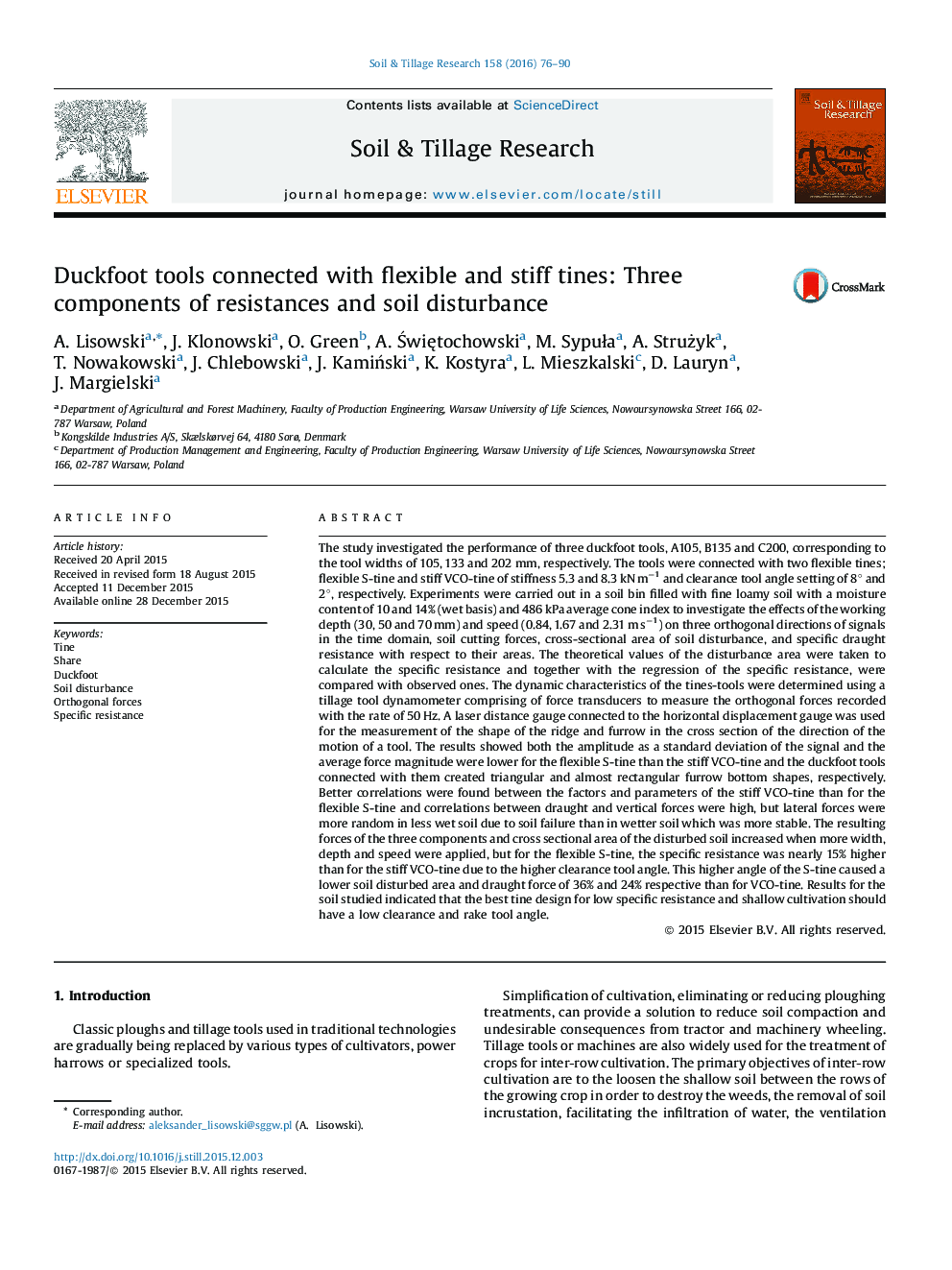| کد مقاله | کد نشریه | سال انتشار | مقاله انگلیسی | نسخه تمام متن |
|---|---|---|---|---|
| 305417 | 513028 | 2016 | 15 صفحه PDF | دانلود رایگان |

• The study investigated the performance of three duckfoot tools.
• The dynamic characteristics of the tines-tools were determined.
• The force signal was lower for the flexible than for the stiff tine.
• Specific resistance for the flexible was higher than for the stiff tine.
• A higher clearance tool angle of the flexible tine cause a lower soil disturbed.
The study investigated the performance of three duckfoot tools, A105, B135 and C200, corresponding to the tool widths of 105, 133 and 202 mm, respectively. The tools were connected with two flexible tines; flexible S-tine and stiff VCO-tine of stiffness 5.3 and 8.3 kN m−1 and clearance tool angle setting of 8° and 2°, respectively. Experiments were carried out in a soil bin filled with fine loamy soil with a moisture content of 10 and 14% (wet basis) and 486 kPa average cone index to investigate the effects of the working depth (30, 50 and 70 mm) and speed (0.84, 1.67 and 2.31 m s−1) on three orthogonal directions of signals in the time domain, soil cutting forces, cross-sectional area of soil disturbance, and specific draught resistance with respect to their areas. The theoretical values of the disturbance area were taken to calculate the specific resistance and together with the regression of the specific resistance, were compared with observed ones. The dynamic characteristics of the tines-tools were determined using a tillage tool dynamometer comprising of force transducers to measure the orthogonal forces recorded with the rate of 50 Hz. A laser distance gauge connected to the horizontal displacement gauge was used for the measurement of the shape of the ridge and furrow in the cross section of the direction of the motion of a tool. The results showed both the amplitude as a standard deviation of the signal and the average force magnitude were lower for the flexible S-tine than the stiff VCO-tine and the duckfoot tools connected with them created triangular and almost rectangular furrow bottom shapes, respectively. Better correlations were found between the factors and parameters of the stiff VCO-tine than for the flexible S-tine and correlations between draught and vertical forces were high, but lateral forces were more random in less wet soil due to soil failure than in wetter soil which was more stable. The resulting forces of the three components and cross sectional area of the disturbed soil increased when more width, depth and speed were applied, but for the flexible S-tine, the specific resistance was nearly 15% higher than for the stiff VCO-tine due to the higher clearance tool angle. This higher angle of the S-tine caused a lower soil disturbed area and draught force of 36% and 24% respective than for VCO-tine. Results for the soil studied indicated that the best tine design for low specific resistance and shallow cultivation should have a low clearance and rake tool angle.
Journal: Soil and Tillage Research - Volume 158, May 2016, Pages 76–90